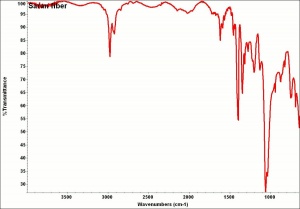Difference between revisions of "Saran film"
(username removed) |
|||
| (4 intermediate revisions by 2 users not shown) | |||
| Line 1: | Line 1: | ||
| + | [[File:1280px-Saran Wrap 02.JPG|thumb|Polyvinylidene chloride film]] | ||
== Description == | == Description == | ||
| − | + | Originally a Dow Chemical tradename for thermoplastic film copolymer of [[polyvinylidene%20chloride|vinylidene chloride]] and small amounts of [[polyvinyl%20chloride|vinyl chloride]] or [[polyacrylonitrile|acrylonitrile]]. Polyvinylidene, or PVDC, was discovered by accident in 1933, by Ralph Wiley a college student working at Dow. The name Saran was trademarked by Dow Chemical in 1940, but is now a commonly used name for thin polyvinylidene chloride films and fibers. The PVDC films haves very low water permeability and is very inert. It has good chemical resistance to acids and alkalis and does not lose strength in sunlight. Saran plastic is used for fibers, packaging films and acid-resistant pipes. Due to costs, many plastic films currently sold for food packaging are composed of [[polyethylene]]. | |
== Synonyms and Related Terms == | == Synonyms and Related Terms == | ||
| Line 8: | Line 9: | ||
[[[SliderGallery rightalign|Saranfiberkj1.jpg~FTIR|Saran Fiber.jpg~FTIR]]] | [[[SliderGallery rightalign|Saranfiberkj1.jpg~FTIR|Saran Fiber.jpg~FTIR]]] | ||
| − | + | == Properties == | |
| − | == | ||
Resistant to acids, alkalis. May be damaged by ketone, carbon tetrachloride, ethanol, perchloroethylene Resistant to insects and bacteria. | Resistant to acids, alkalis. May be damaged by ketone, carbon tetrachloride, ethanol, perchloroethylene Resistant to insects and bacteria. | ||
| Line 32: | Line 32: | ||
° Dow Chemical: [http://www.dow.com/saran/films/index.htm Website] ° The History of Saran Wrap: [http://inventors.about.com/library/inventors/blsaranwrap.htm Website] | ° Dow Chemical: [http://www.dow.com/saran/films/index.htm Website] ° The History of Saran Wrap: [http://inventors.about.com/library/inventors/blsaranwrap.htm Website] | ||
| − | == | + | == Sources Checked for Data in Record == |
* G.S.Brady, ''Materials Handbook'', McGraw-Hill Book Co., New York, 1971 Comment: p. 850 | * G.S.Brady, ''Materials Handbook'', McGraw-Hill Book Co., New York, 1971 Comment: p. 850 | ||
Revision as of 10:14, 4 November 2018
Description
Originally a Dow Chemical tradename for thermoplastic film copolymer of vinylidene chloride and small amounts of vinyl chloride or acrylonitrile. Polyvinylidene, or PVDC, was discovered by accident in 1933, by Ralph Wiley a college student working at Dow. The name Saran was trademarked by Dow Chemical in 1940, but is now a commonly used name for thin polyvinylidene chloride films and fibers. The PVDC films haves very low water permeability and is very inert. It has good chemical resistance to acids and alkalis and does not lose strength in sunlight. Saran plastic is used for fibers, packaging films and acid-resistant pipes. Due to costs, many plastic films currently sold for food packaging are composed of Polyethylene.
Synonyms and Related Terms
Saran Wrap [Dow Chemical]
Properties
Resistant to acids, alkalis. May be damaged by ketone, carbon tetrachloride, ethanol, perchloroethylene Resistant to insects and bacteria.
For 1 mil film: Oxygen transmission = 12-16 ml/m2d; Water vapor transmission = 3.8 g/m2d
| Melting Point | 160-177 |
|---|---|
| Density | 1.17 |
Hazards and Safety
Nonflammable.
Additional Information
° Dow Chemical: Website ° The History of Saran Wrap: Website
Sources Checked for Data in Record
- G.S.Brady, Materials Handbook, McGraw-Hill Book Co., New York, 1971 Comment: p. 850
- Rosalie Rosso King, Textile Identification, Conservation, and Preservation, Noyes Publications, Park Ridge, NJ, 1985
- Pam Hatchfield, Pollutants in the Museum Environment, Archetype Press, London, 2002
- Wikipedia, the free encyclopedia, at http://www.wikipedia.com Comment: http://en.wikipedia.org/wiki/Saran_%28plastic%29 (Accessed Sept. 14, 2005)


